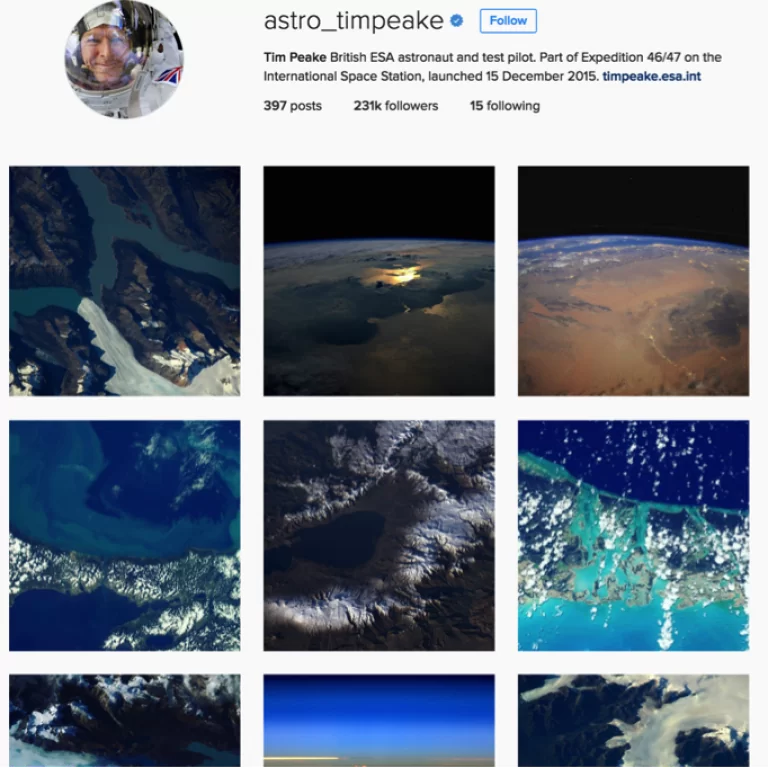
News Exploring space with photography
We have devoted a number of blog posts to the topic of space photography and some of the out-of-this-world achievements that have been documented using the best in recent camera technologies.
Photography has long been used in interesting ways to communicate the endless wonders of the cosmos to us back here on Earth. This communication has never been easier and more immediate as it is with the advent of social media.
An astronaut committed to this project is Tim Peake, the first British crew member for the European Space Agency and the sixth-person born in the UK to go on-board the International Space Station (ISS). In April 2016 he also became the first man to run a marathon in space – Peake ‘took part’ in the 2016 London Marathon from a treadmill on the station!
Peake’s current mission on the ISS began in December 2015 and since then he has uploaded over 300 images of his space travels to his Instagram account, @astro_timpeake.
With over 231,000 followers, Peake’s photography is not only making the photographs themselves more accessible, but is encouraging these explorations of our outer atmosphere to become part of a more mainstream cultural consciousness.
Peake uses a Nikon D4 for his photographs of Earth along with a variety of different lenses to capture the most intricate of details of our planet from outer space.
As well as extreme aerial images of Earth, sunsets over the horizon, and details of the interiors and exteriors of the ISS (and the occasional selfie), Peake has also included some time-lapse footage during his mission.
In one of his videos, which has accrued over 30.4 thousand views since being published, Peake reveals other satellites in orbit around the ISS that are often very difficult to see with the naked eye.
The time-lapse sequence includes images taken each second that are then played at a rate of 25 images per second, giving the illusion of the Earth rotating on its axis before your very eyes.
Back on Earth, as much as there is a growing interest in space photography facilitated by the easier accessibility of content on social media and the Internet more widely, there is also a burgeoning interest in what can be achieved while your feet are still on solid ground.
With camera technologies continuing to evolve, the possibilities to capture decent quality images of space are now relatively easy to achieve. It is even possible to capture beautiful ‘nightscapes’ with a few key items of equipment that are relatively inexpensive.
When combining a DSLR camera, a tripod, telescope, and some computer software, the effects can be truly stunning.
The process known as ‘stacking,’ where multiple photos can be added together, can be used in order to retain finer results. This is particularly helpful to astrophotography, as working with low levels of light can sometimes affect the quality of an image.
Further advancements in camera technology has led to further discoveries of our cosmos. This has always been something that photography has allowed for – capturing what the eye cannot always see.
So, whether you are up in space or with your feet firmly on the ground, the camera’s lens is the key to its exploration.